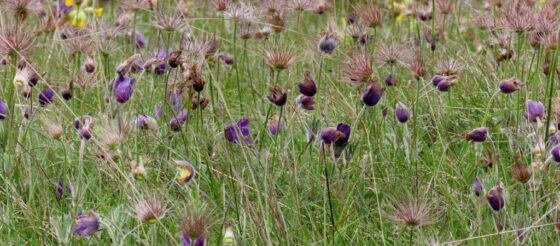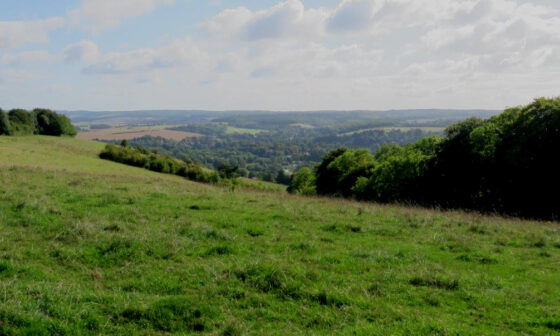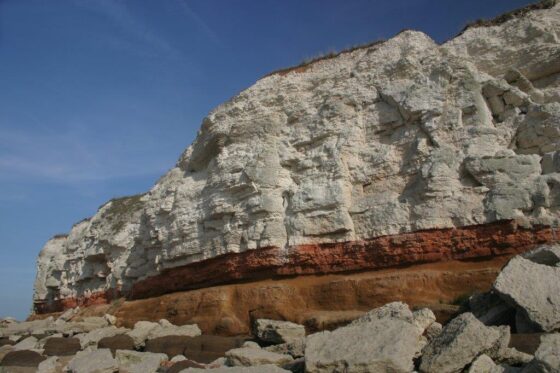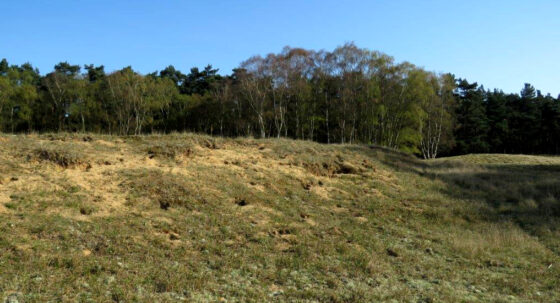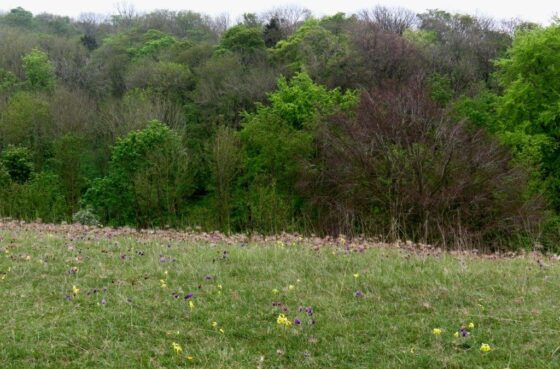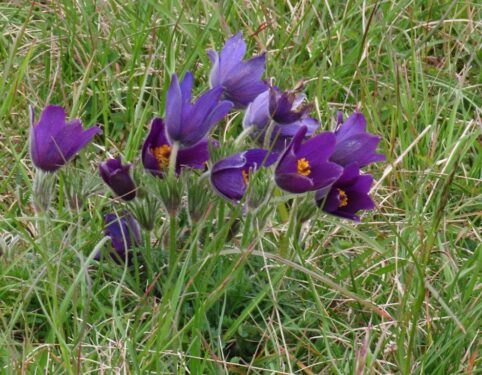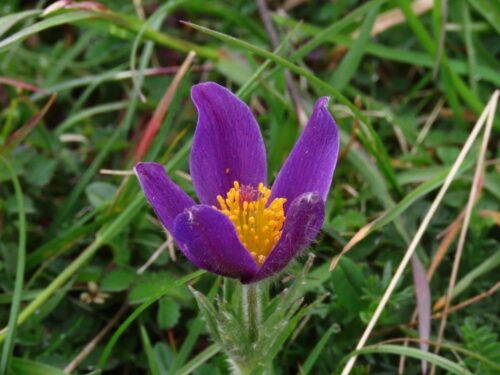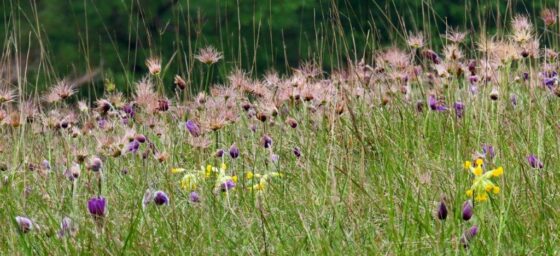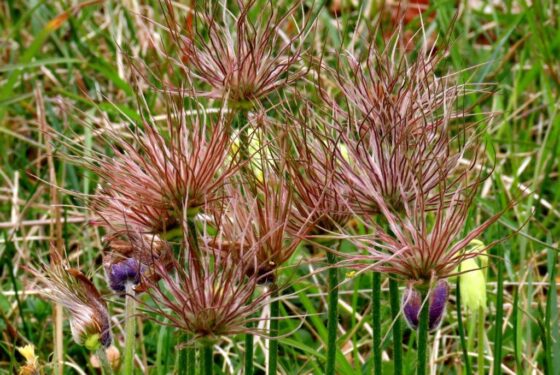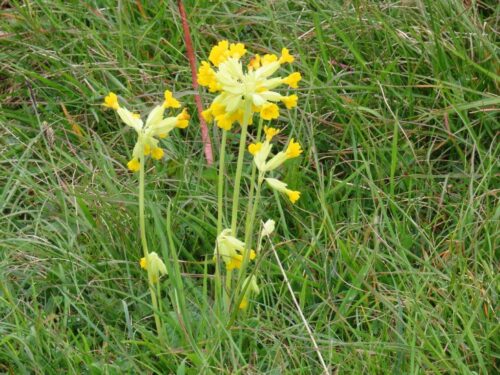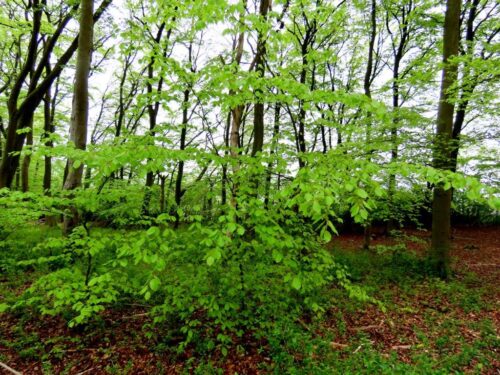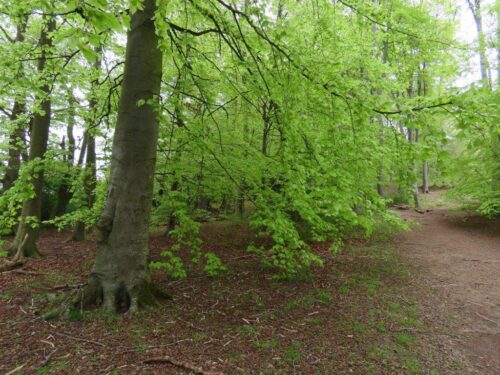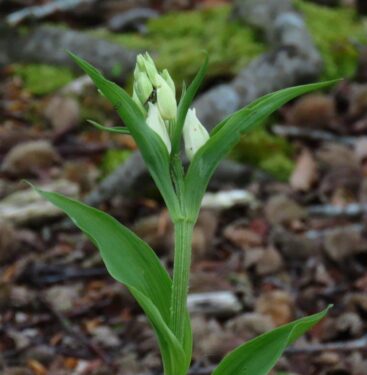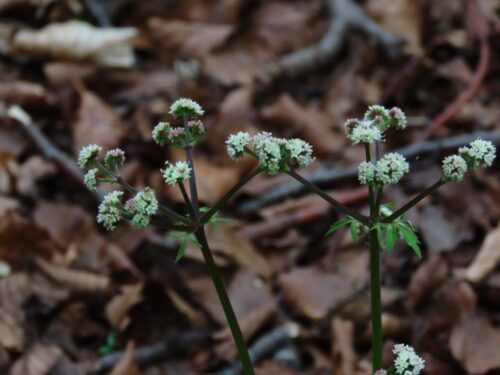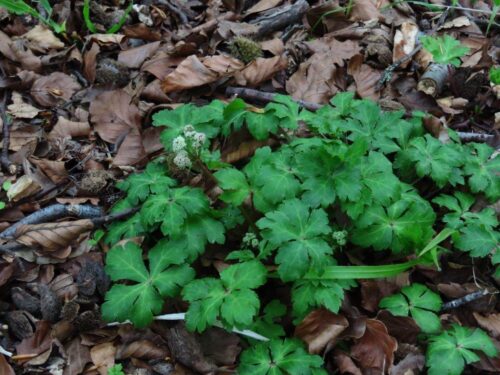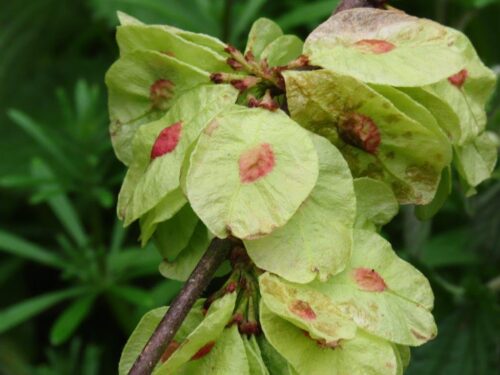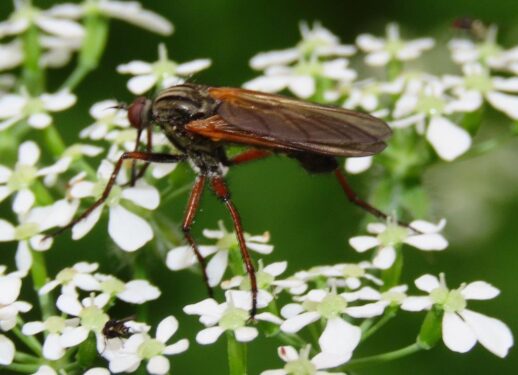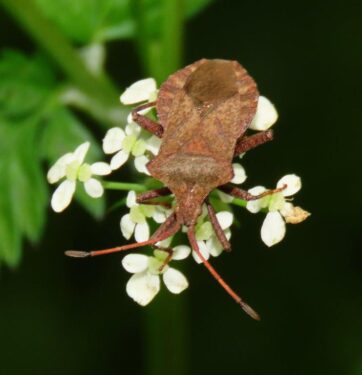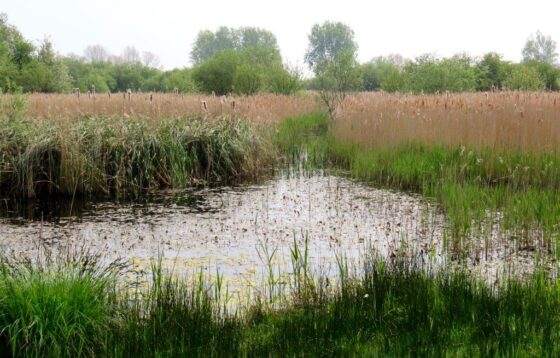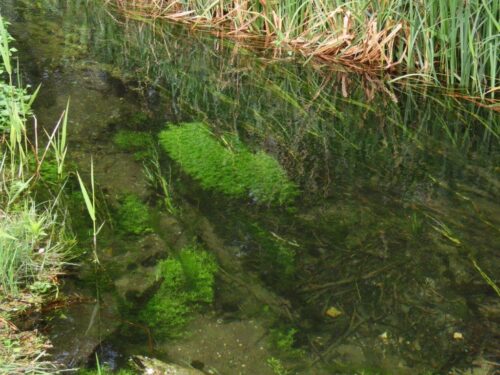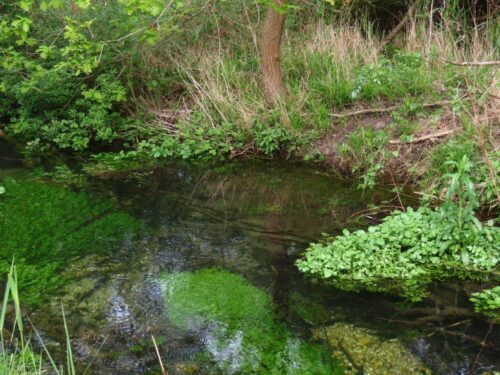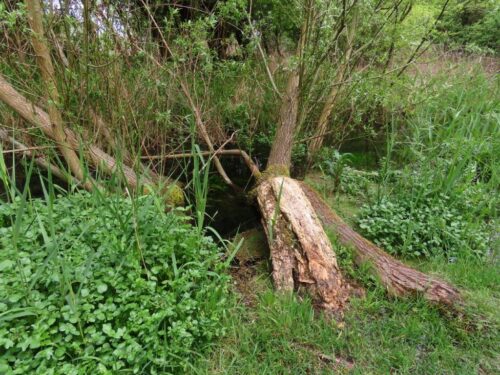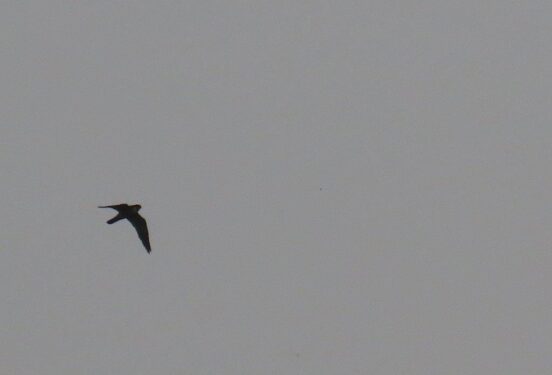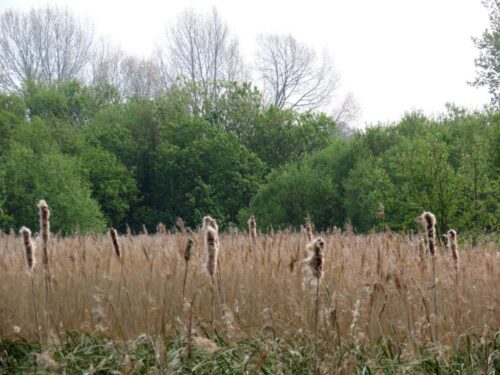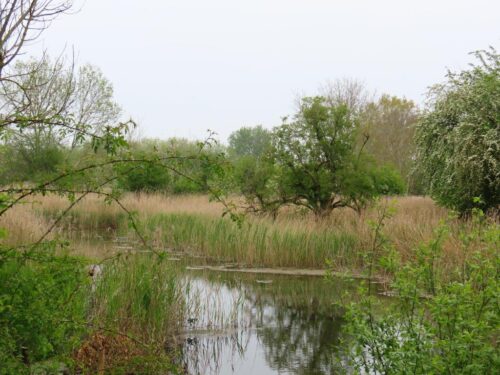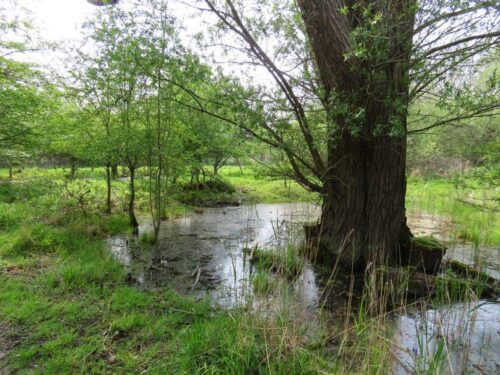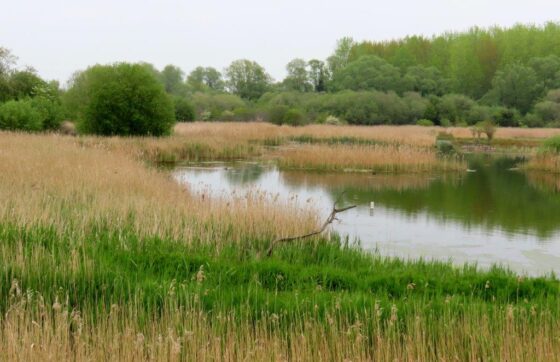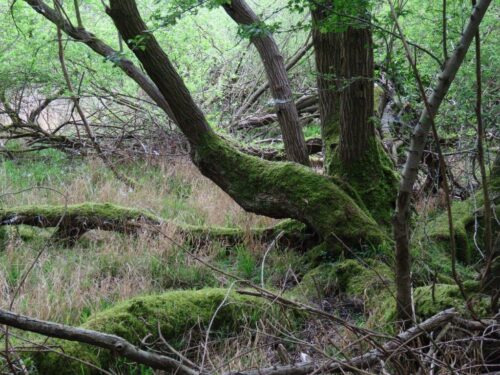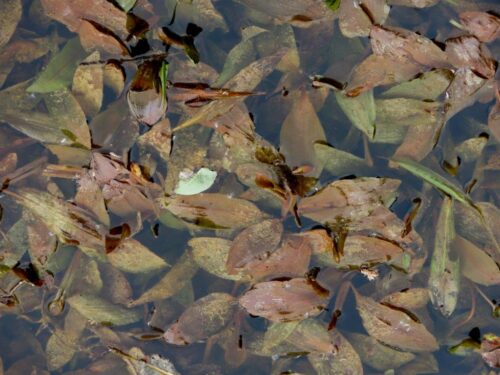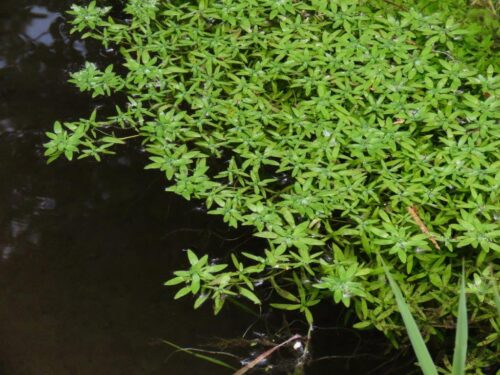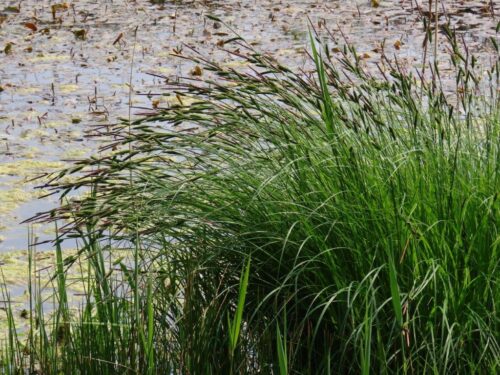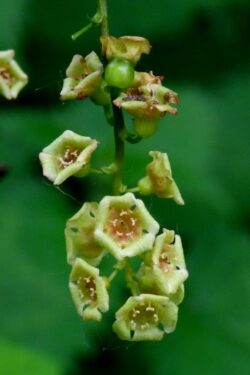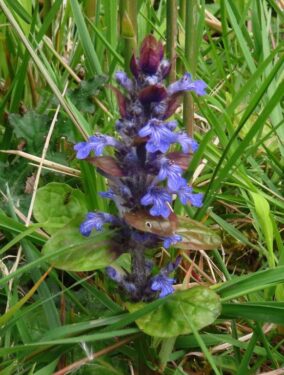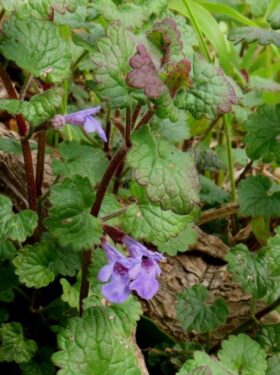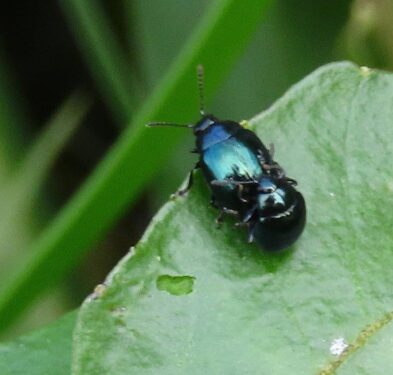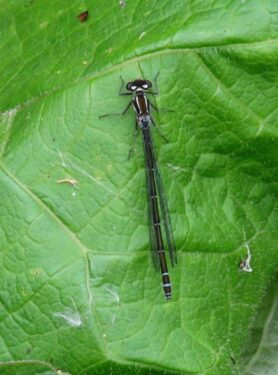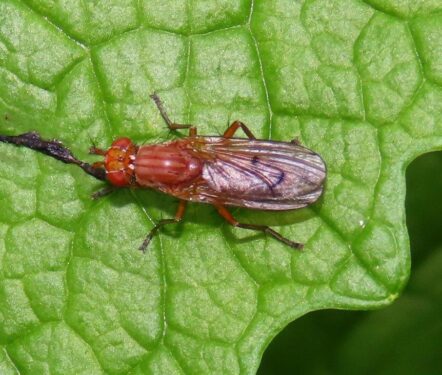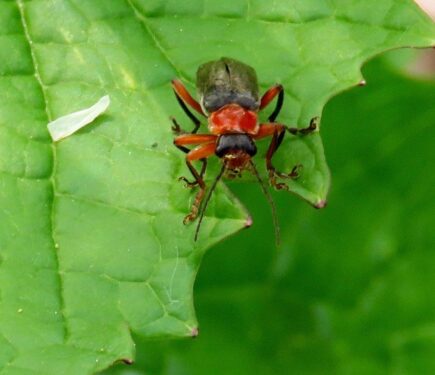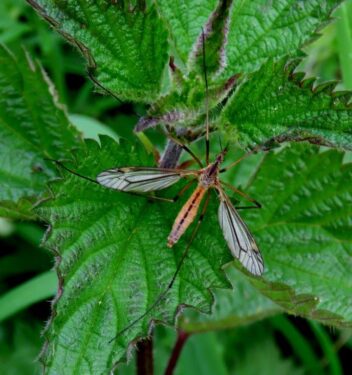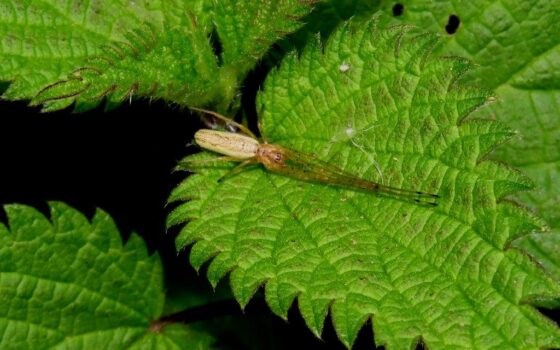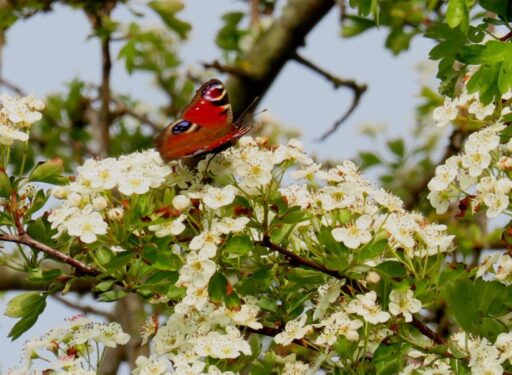The Chilterns are one of the country’s great chalk landscapes, running north-easterly from the River Thames around Reading into Hertfordshire, rolling hills clad in grassland and woods, before reappearing at the surface in north Norfolk, ending in the dramatic cliffscapes of Hunstanton.
In between these two sections though, the chalk may be underground but it still influences the surface ecology, below the shallow Breckland coversands, and a little further southwest in the chalk spring-fed fens west of Cambridge, around Fowlmere.
Last week I was invited to give a talk in the latter village, so I took the opportunity to visit some of the chalk areas, about as far away from the Essex coast as one can get in East Anglia. I started at the final outpost of the main Chilterns massif, close to the Hertfordshire-Cambridgeshire border. Therfield Heath, near Royston is a site widely recognized as one of the best places to see Pasque Flowers in Britain. With our early spring, the flowers were past their best, although still very impressive even though the sun was barely out:
Even the fruiting heads make for a spectacle, dotted with Cowslips:
The beechwoods were bursting into fresh leaf, the soon-to-be deeply shaded woodland floor producing numerous White Helleborines (their buds just bursting) and Sanicle in full, undemonstrative flower, while Wych Elm was in fruit already.
In the shade of the trees, only a few insects were apparent but included Dance Flies and Dock Bugs:
Then it was over to the spring-fed fens, specifically RSPB Fowlmere, my first visit to this lovely wetland.
Formerly watercress beds, the reedbeds and scrub are flanked by a crystal-clear chalk stream (the River Shep) that arises in the reserve.
Reed and Sedge Warblers were clamouring among the reeds, while Lesser Whitethroats and Cuckoos sang from the bushes, Skylarks and Corn Buntings serenaded from the surrounding farmland, and Hobbies hurtled around after newly emerged dragonflies and damselflies.
A lovely diverse fen, and a pleasure to spend an afternoon there…
… with aquatic and waterside plants…
… and flowers of damp shade, from Redcurrant to Bugle …
… and all topped of with an array of insects, including Watercress Leaf-beetle and wetland snail-killer flies.
